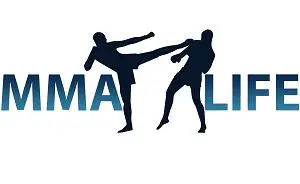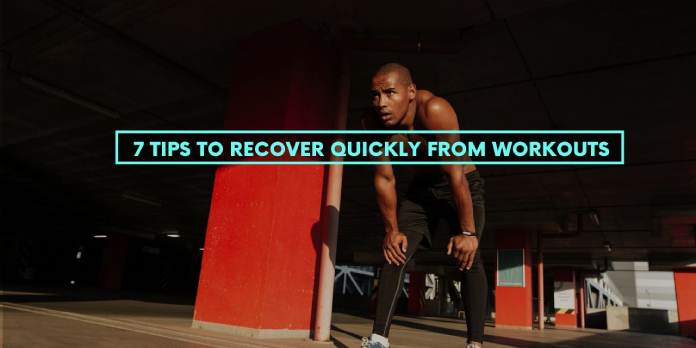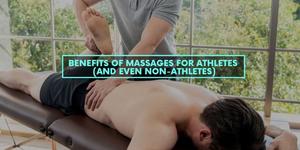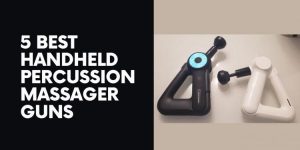Feeling a bit achy after a strenuous workout? You’re not alone.
Anyone who has recently hit the gym hard, or wrapped up a rough competitive sporting event like a marathon or a boxing match, knows that familiar sensation: Muscle tenderness, pain or tightness when moving or stretching, or outright debilitating pain that prevents you from doing the hobbies and activities you enjoy or keeps you out of the gym for several days.
This is technically known as delayed onset muscle soreness (DOMS), a term that exercise physiologists use to label the aches and pains that begin to kick in 24 to 48 hours after exercise.
And according to the Sports Medicine research journal, DOMS is common among all athletes and fitness enthusiasts and may be caused by several major factors:
- Muscle damage
- Muscle or tissue inflammation
- Damage to your tendons or connective tissues
- A buildup of lactic acid or other enzymes
But just because muscle aches and pains are common and normal any time you compete in a sport or break a sweat in the gym, it doesn’t mean you have to just put up with it and suffer through it.
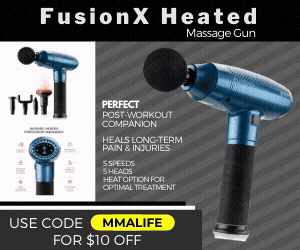
In fact, elite athletes, coaches and exercise physiologists have identified several key ways to speed up your exercise recovery so you can get back into the game — or the gym — faster than ever.
Why Exercise Recovery Is Necessary (And How to Speed It Up)
A proper, healthy post-workout recovery strategy is critical for ensuring you’re at the top of your fitness game.
Your muscles aren’t built in the gym during the actual workout. In fact, it’s during your recovery that your body repairs and rebuilds, getting stronger and leaner and increasing your stamina and endurance.
So rather than circumventing or trying to take a shortcut in their recovery, elite athletes employ a wide range of fitness strategies to reduce delayed onset muscle soreness (DOMS) while simultaneously helping their body repair itself faster.
This ensures they reap all the wellness benefits of a proper workout recovery schedule, while also empowering them to stick to a rigorous workout schedule that can’t be waylaid by chronic aches and pains.
If you want to speed up your post-exercise recovery and minimize DOMS, follow these tips and tricks.
1. Rethink What You Drink
That caffeinated pre-workout energy drink that you take to get pumped for your workout may have a surprising post-workout benefit.
In a recent study published in the Journal of Pain, scientists looked at how caffeine impacted muscle strength, fatigue and recovery. They discovered that caffeine taken before exercise resulted in a 48% reduction in delayed onset muscle soreness after you leave the gym.
Likewise, don’t forget to drink a lot of fluids — not just coffee! — during and after your workout. Dehydration is strongly linked with poor recovery and increased DOMS.
The American Council on Exercise recommends the following if you want to support muscle recovery and prevent cramps, pain and fatigue:
- Weigh yourself and note your weight
- Drink 20 ounces of fluids 120 minutes before you hit the gym
- Aim to sip 10 ounces of fluid every 15 minutes during exercise
- Weigh yourself after you’re done exercising
- Drink 24 ounces of fluid for every pound of body weight that you’ve lost during your workout
2. Fuel Your Recovery
When you’re competing in a sport or working out in the gym, your muscles burn up their stores of glycogen and use it as fuel. Various proteins in your muscle tissue also get damaged or metabolized.
After you exercise, your body gets to work repairing and regrowing your muscle proteins, and also replenishing its internal stores of glycogen.
Proper post-workout nutrition fuels that process to enhance your recovery.
Protein is one key nutrient for doing exactly that. Numerous studies, including those published in the American Journal of Physiology and Journal of the International Society of Sports Nutrition suggest eating 20-40 grams of protein immediately after exercise to maximize your recovery.
Research suggests that a delay between your workout and your protein ingestion may sabotage your recovery. If packing a meal to the gym proves too troublesome, you may want to consider a convenient, simple protein shake as a quick way to get the nutrition you need while on the go.
3. Get In Touch With Your Muscles
A wide range of physical recovery modalities, from massages to stretching, promise to enhance your recovery. But not all physical recovery options are alike.
A systematic review, published in the Frontiers of Physiology research journal, reviewed 99 different scientific studies. They specifically measured recovery speed by monitoring markers of muscle damage (e.g. inflammation) and looking at how various physical recovery methods impacted delayed onset muscle soreness.
“Massage was found to be the most powerful technique for recovering from DOMS and fatigue,” reports the researchers.
But we’re not talking about a gentle, soothing massage like what you might find in a candlelit spa. Sports massage specifically targets the specific muscles that you’re trying to repair, and registered massage therapists (RMTs) are trained to go deep into the affected tissue.
Some RMTs may also offer specialized massage options, such as myofascial release. This is where the therapist physically manipulates the membranes that wrap around and support your muscles, helping to improve their elasticity and flexibility to enhance muscle recovery and reduce pain.
4. Roll or Press It Out
If heading to a sports massage studio is inconvenient or out of your budget, or if you want to support and supplement a sports massage you recently got, you may wish to try at-home physical manipulation tools.
These offer similar benefits to a massage, but are do-it-yourself within the privacy and comfort of your living room or your bedroom.
Popular options include rollers, whether that’s a foam roller, a roller ball, or a massage gun.
Several small studies have found that rolling your muscles may improve DOMS, enhance your range of motion, speed up your muscle recovery, and reduce muscle fatigue after you work out. Rolling your affected muscles may even help with myofascial release!
“Foam rolling can be done on a daily basis on any muscle group,” explains Ohio State University’s Wexner Medical Center. “It’s most effective when it’s utilized on a consistent basis. Targeting a specific muscle for five to 30 seconds, you should feel the tenderness of the area dissipate.”
Likewise, massage guns can press or roll out sore muscles, applying pressure to your body that you’d find difficult to do just with your own fingers.
5. Wear Compression Garments
Compression gear, whether it’s a shirt or pants or even a band wrapped around a sore limb, may boost your recovery by narrowing your veins.
While it seems counterintuitive, your blood travels faster through narrowed veins. Faster blood flow means that more nutrients and oxygen get sent to the affected area. This may help to speed your exercise recovery, reduce DOMS, and flush out lactic acid that built up while you worked out.
“Similar to massage…compression garments induced a significant and positive impact on DOMS and perceived fatigue,” reports the Frontiers of Physiology review. Surprisingly, the researchers found that compression garments had a “significant impact on DOMs” even at 96 hours after a workout!
However, the sooner you pull on your favorite pair of tights, the better. “It has been shown that wearing a whole-body compression garment over a 24-h period after intense heavy resistance training significantly reduces perceived fatigue,” notes the researchers.
6. Add In Recovery Workouts
The old adage, “go hard or go home,” may be inspiring but it may also be misplaced if you take your post-exercise recovery seriously.
Recovery workouts are an active form of recovery intended to help ease your body from a state of intense exercise to a state of repair.
While doing an intense workout for as long as possible may feel like you’re working towards your fitness goals faster, shortening the intense part of your workout and adding slower, gentler exercise to the end may actually help you accomplish your goals better in the long term.
A study published in the Journal of Strength & Conditioning Research found that doing 20 minutes of low-intensity aerobics after a DOMS-inducing strength-building workout not only reduced DOMS but also enhanced the athletes’ overarching strength.
7. Catch More Zs
“Quality sleep after lifting weights could be the secret to building stronger muscles, faster,” reports the National Sleep Foundation.
It’s during your sleep that your body releases a wide range of hormones responsible for muscle recovery, repair and growth. This includes the much-vaunted human growth hormone (HGH).
“During…sleep, blood flow to your muscles increases, and tissue growth and repair occurs,” explains the foundation. “During REM sleep, the muscles relax, which can help relieve tension and reduce symptoms of certain types of chronic pain. In fact, many of the critical restorative functions in the body—like tissue repair and muscle growth—occur mostly or only during sleep.”
The National Sleep Foundation notes that competitive athletes benefit the most from getting seven to nine hours of sleep a night.
If you have trouble sleeping, a gentle nighttime athletic ritual involving yoga, tai chi or similar calming movements can support your fitness while also helping you to relax and go to bed.
